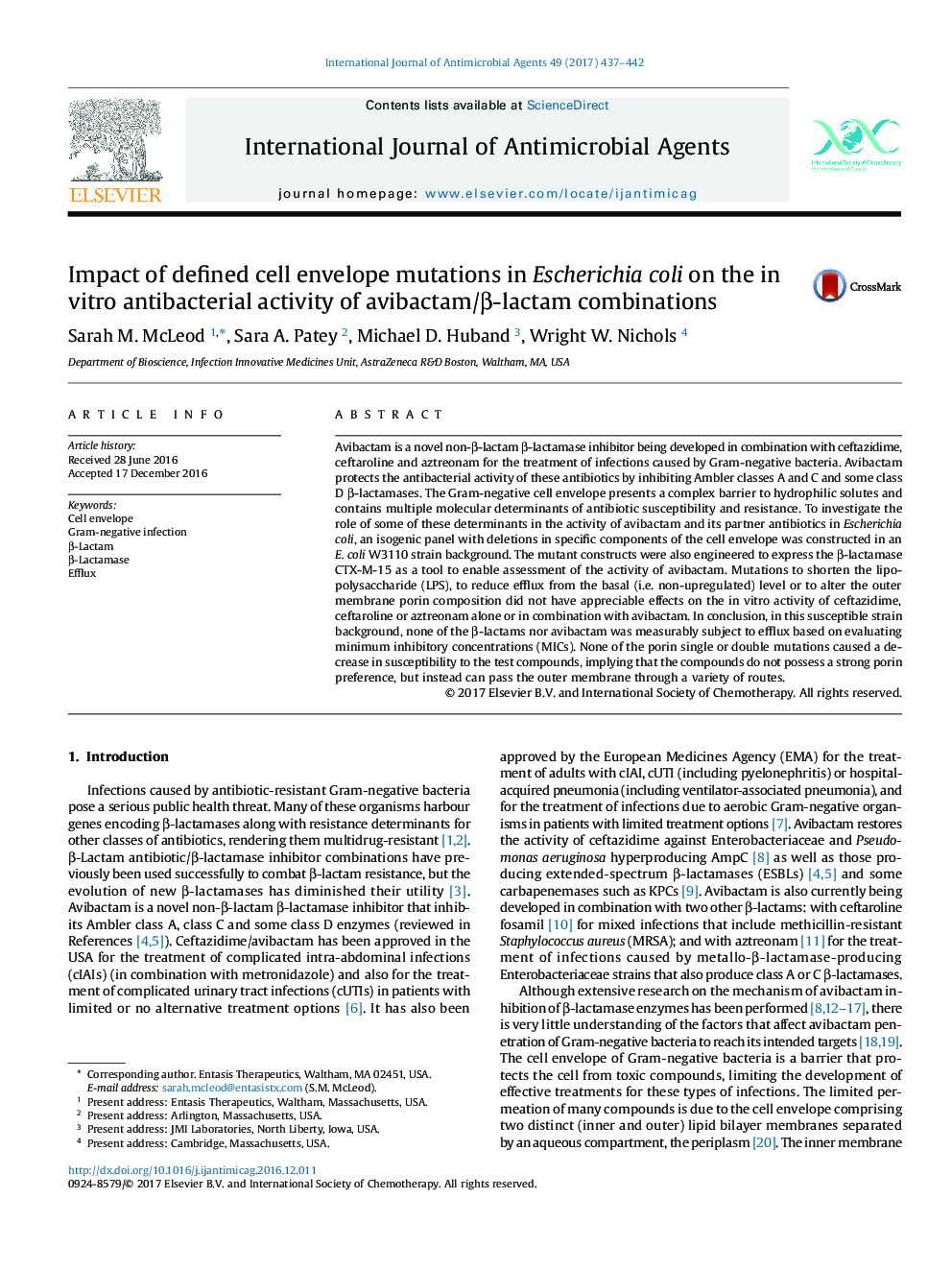| Article ID | Journal | Published Year | Pages | File Type |
|---|---|---|---|---|
| 5666825 | International Journal of Antimicrobial Agents | 2017 | 6 Pages |
â¢Avibactam is a novel β-lactamase inhibitor partnered with β-lactam antibiotics.â¢This study addresses how the bacterial cell envelope affects the activity of avibactam.â¢Isogenic strains of E. coli with gene deletions for products affecting cell permeability were profiled.â¢Activity of avibactam combinations unaffected by LPS truncation or reduced efflux.â¢No strong porin preference was detected for any of the avibactam combinations.
Avibactam is a novel non-β-lactam β-lactamase inhibitor being developed in combination with ceftazidime, ceftaroline and aztreonam for the treatment of infections caused by Gram-negative bacteria. Avibactam protects the antibacterial activity of these antibiotics by inhibiting Ambler classes A and C and some class D β-lactamases. The Gram-negative cell envelope presents a complex barrier to hydrophilic solutes and contains multiple molecular determinants of antibiotic susceptibility and resistance. To investigate the role of some of these determinants in the activity of avibactam and its partner antibiotics in Escherichia coli, an isogenic panel with deletions in specific components of the cell envelope was constructed in an E. coli W3110 strain background. The mutant constructs were also engineered to express the β-lactamase CTX-M-15 as a tool to enable assessment of the activity of avibactam. Mutations to shorten the lipopolysaccharide (LPS), to reduce efflux from the basal (i.e. non-upregulated) level or to alter the outer membrane porin composition did not have appreciable effects on the in vitro activity of ceftazidime, ceftaroline or aztreonam alone or in combination with avibactam. In conclusion, in this susceptible strain background, none of the β-lactams nor avibactam was measurably subject to efflux based on evaluating minimum inhibitory concentrations (MICs). None of the porin single or double mutations caused a decrease in susceptibility to the test compounds, implying that the compounds do not possess a strong porin preference, but instead can pass the outer membrane through a variety of routes.
